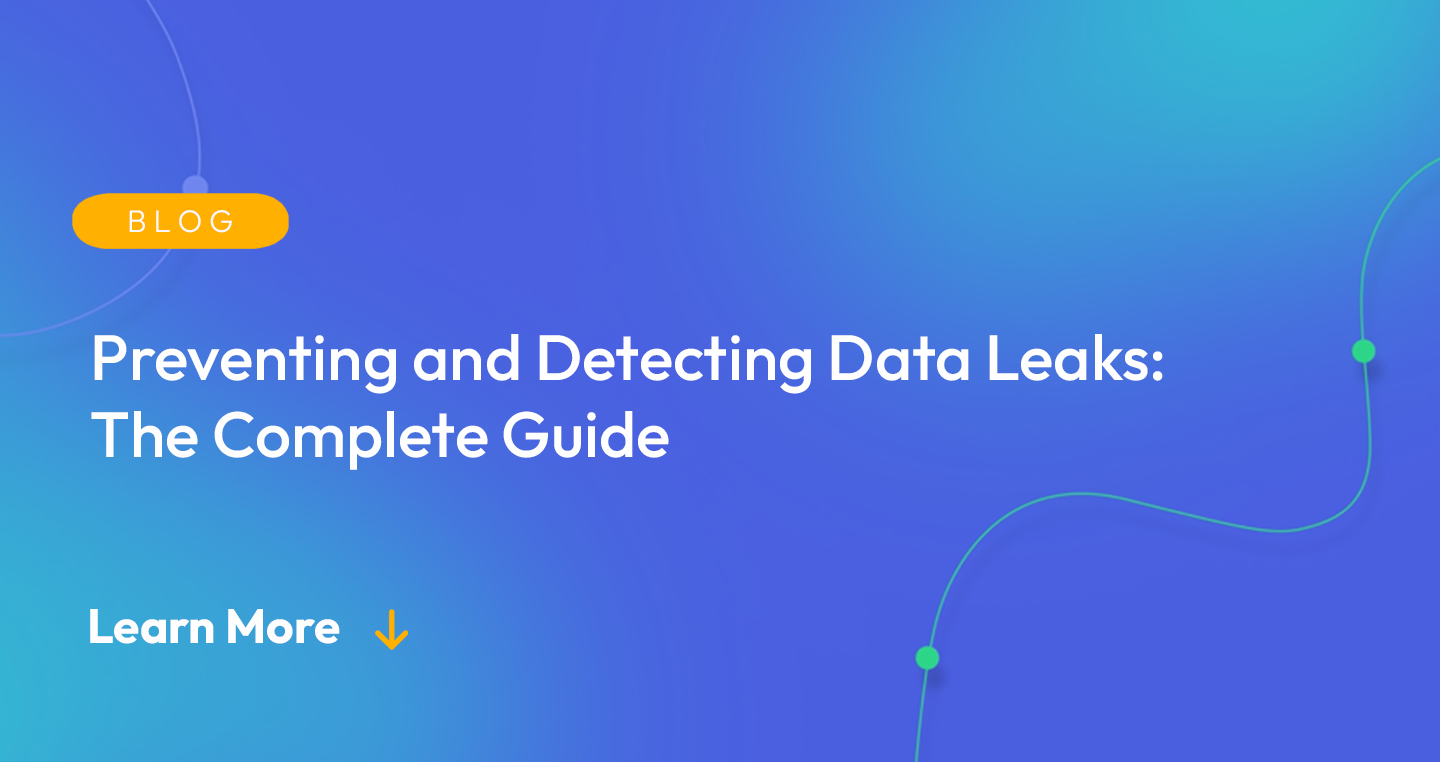
Data leaks have become a growing concern for businesses, governments, and individuals in today’s hyper-connected digital world. In this article, we cover the proven strategies and best practices of data leakage prevention.
Understanding Data Leaks
Before diving into prevention and detection methods, it is crucial to understand what data leaks are, their potential impact, and the common causes behind them.
Definition and types of data leaks
A data leak occurs when sensitive, confidential, or protected information is inadvertently or intentionally disclosed to unauthorized individuals. Data leaks can take various forms, such as:
- Accidental sharing of sensitive information by employees
- Misconfiguration of cloud storage or databases, leading to public exposure
- Insider threats, where a malicious employee or contractor steals or discloses data
- Cyberattacks, where external threat actors breach a system and exfiltrate data
The impact of data leaks on organizations
Data leaks can have severe consequences for organizations, including:
- Financial losses due to fines, lawsuits, and remediation costs
- Reputational damage, leading to a loss of customers, partners, and investors
- Loss of intellectual property and trade secrets
- Legal and regulatory penalties for non-compliance with data protection laws
Common causes of data leaks
Understanding the root causes of data leaks is essential for implementing effective prevention measures. Some of the most common causes include:
- Human error: Employees can unintentionally share sensitive information through email or other communication channels, misplace devices containing sensitive data, or fall victim to social engineering attacks.
- Weak security controls: Inadequate access controls, unencrypted data, and outdated software can leave organizations vulnerable to data leaks. Lack of best security practices for tools such as GitHub can result in leaked secrets.
- Third-party risks: Vendors or partners with weak security practices can expose an organization’s data to leaks.
- Insider threats: Disgruntled or malicious employees may intentionally steal or disclose sensitive data.
- Cyberattacks: Advanced persistent threats (APTs), ransomware, and other cyber threats can lead to data leaks if an organization’s defenses are breached.
Implementing Strong Security Policies to Prevent Data Leaks
Developing and enforcing robust security policies are essential in creating a secure environment to prevent and detect data leaks. This section outlines the key components of an effective security policy.
Employee awareness and training
Human error is a leading cause of data leaks, making it vital to educate employees about the importance of data security. Implement a comprehensive training program that covers topics such as handling sensitive data, identifying phishing attacks, and following proper password hygiene. Regularly update and reinforce this training to keep employees informed about the latest threats and best practices.
Access controls and least privilege principle
Restrict access to sensitive data by implementing role-based access control (RBAC) and the principle of least privilege. This ensures that employees only have access to the information necessary to perform their job functions. Regularly review and update access permissions to maintain a secure environment.
Password management and multi-factor authentication (MFA)
Enforce strong password policies, requiring employees to use complex, unique passwords for each account. Encourage or mandate the use of password managers to help employees securely store and manage their credentials. Implement multi-factor authentication (MFA) for an additional layer of security, especially for remote access and privileged accounts.
Data Classification and Encryption: A Hidden Key to Data Leak Prevention
Integrate the world’s easiest to use and most comprehensive cybercrime database into your security program in 30 minutes.
Proper data classification and encryption can significantly reduce the risk of data leaks by ensuring that sensitive information is adequately protected.
Identifying and classifying sensitive data
Begin by identifying the types of data your organization handles, such as personal information, financial records, intellectual property, and trade secrets. Once identified, classify the data based on its sensitivity and the potential impact if leaked. Establish clear guidelines and processes for handling each data classification level, and ensure that employees understand their responsibilities.
Implementing data encryption at rest and in transit
Encrypt sensitive data both at rest (e.g., stored on hard drives, servers, or cloud storage) and in transit (e.g., transmitted over networks or between systems). This ensures that even if unauthorized individuals gain access to the data, they cannot read or use it without the decryption keys. Use industry-standard encryption algorithms such as AES-256 for optimal protection.
Key management best practices
Proper key management is crucial for maintaining the effectiveness of encryption. Implement the following best practices for managing encryption keys:
- Store encryption keys separately from the encrypted data
- Limit access to encryption keys to a small group of trusted employees or systems
- Use hardware security modules (HSMs) or key management services (KMS) to protect and manage keys
- Regularly rotate encryption keys to minimize the impact of potential key compromises
- Implement procedures for securely generating, storing, and retiring encryption keys
Endpoint Security and Mobile Device Management for Preventing Data Leaks
Securing endpoints and managing mobile devices is critical for preventing unauthorized access to sensitive data and minimizing the risk of data leaks.
Antivirus and anti-malware software
Install reputable antivirus and anti-malware software on all endpoints, including servers, desktops, and laptops. Regularly update these programs to ensure they can effectively detect and mitigate the latest threats.
Patch management and software updates
Keep operating systems, applications, and firmware up-to-date by regularly applying security patches and updates. Implement a patch management process to track, test, and deploy updates in a timely manner, prioritizing critical security patches.
Implementing mobile device management (MDM) solutions
With the increasing use of mobile devices for work purposes, it’s essential to have a robust mobile device management (MDM) solution in place. MDM solutions help enforce security policies, remotely wipe lost or stolen devices, and monitor for potential threats. Additionally, consider implementing containerization or app sandboxing to separate personal and work-related data on mobile devices.
Incident Response and Data Leak Detection
Being prepared for data leaks and having a plan in place to respond to incidents can significantly minimize their impact.
Building an effective incident response team
Assemble a cross-functional incident response team that includes members from IT, legal, public relations, and other relevant departments. Develop a clear incident response plan that outlines roles, responsibilities, and procedures to follow in the event of a data leak.
Implementing data loss prevention (DLP) solutions
Deploy data leakage prevention (DLP) tools to monitor, detect, and block unauthorized access, transmission, or exfiltration of sensitive data. DLP solutions can be implemented at various points, including endpoints, networks, and cloud storage.
Regular auditing and penetration testing
Conduct regular security audits to identify and address vulnerabilities in your organization’s security posture. Additionally, perform penetration testing to simulate real-world attacks and assess the effectiveness of your security controls.
Data Leak Prevention and Detection
Preventing and detecting data leaks is a continuous process that requires vigilance and adaptation to the evolving threat landscape. By implementing strong security policies, data classification and encryption, network security, endpoint and mobile device management, incident response, and adhering to legal and regulatory requirements, organizations can significantly reduce their risk of data leaks and minimize the impact of potential incidents. Stay proactive and up-to-date with the latest best practices to ensure the safety of your organization’s sensitive information.
Detect Leaks with Flare
Flare monitors the clear & dark web so you can find data leaks immediately, before threat actors do. Our comprehensive Threat Exposure Management (TEM) capabilities protect your organization’s sensitive information.
Sign up for Flare’s free trial to see how we can detect leaks for your organization.


